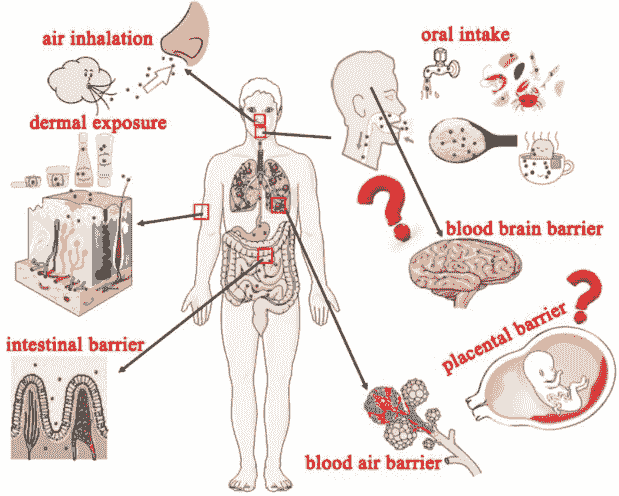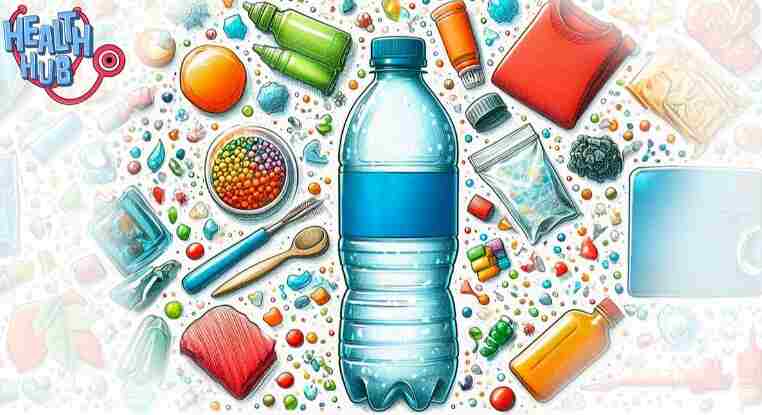Introduction
Nanoplastics are associated with several risks to the ecology and toxicity to humans. Nanoplastics are synthetic polymers with dimensions ranging from 1 nm to 1 μm. The formation of nanoplastics can result from various processes, including exposure to sunlight, the action of salt water, wave movements, and other environmental factors that promote the degradation of plastics.
Additionally, it is important to note that nanoplastics can also be intentionally created for specific purposes, including in certain industrial applications. A new study estimated that, on average, one litre of bottled water contains 240,000 detectable plastic fragments. These are known as nanoplastics.
Nanoplastics are a cause for concern because they are difficult to detect and can pass through intestinal, tissue, and blood-brain barriers, resulting in serious health implications.
To make sure your water is safe to drink, you can place water filters on the faucets and use them before drinking the water to get rid of some of the unwanted particles.
Health experts have become increasingly concerned about microplastics and their impact on humans and the environment.

Nanoplastic Contamination in Environment
The growing concern about Nanoplastics among citizens reflects the intensified efforts by scientists to study this new type of pollution. Our common motivation is to ascertain the consequences of plastic pollution on ecosystems and human health. We have determined that plastic debris is made of a complex mixture of polymer and additives that evolve upon ageing.
We understand that plastic particles are dynamic systems whose size constantly changes, in which organic and inorganic molecules can bind and interact with microorganisms. We have also discovered that plastic debris is present at the macro-, micro-, and nanoscale, and this finding has had major consequences from the perspective of potential impacts on organisms. For example, the presence of nanoplastic debris opens up other mechanisms of particle action in organisms, such as translocation.
A major concern for nano plastics is twofold, in that they are:
1) Difficult to detect and filter out of consumer food and drink products.
2) More readily able to cross intestinal, tissue, and blood-brain barriers thus potentially negatively impacting multiple organ systems.
Why there’s so much plastic in food
“In most consumer goods, be it food, drink, or cosmetics, there is a long and complicated production process each encounters from the harvest of raw material to the finishing, packaging, and shipping. “At each step, the product can be exposed and contaminated with various plastic-related chemicals. Thus, it is not surprising that with the author’s utilization of new techniques to detect the nanoplastics [found] so many new nanoplastics in consumer goods.”
Likewise, harmless chemicals placed into consumer goods and packages can sometimes degrade over time due to exposure to environmental agents such as UV radiation, normal spectrum light radiation, heat, ozone, and age and be chemically and physically modified into new chemical forms that can pose health dangers.
Therefore, it is important to store packages of consumer goods (food, drink, cosmetics, pharmaceuticals) as they are indicated as well as discard items that are beyond their expiration date.

Impacts of nano plastics on health
This study raises serious concerns about its implications for human health, drawing increased attention to the potential health risks associated with bottled water consumption. The consequences of these high levels of plastic particles on health can be manifold. Some possible impacts of nano plastics include
- Digestive system risks: Plastic particles could potentially be ingested by individuals when consuming contaminated water, posing risks to the digestive system.
- Toxicity of chemical substances: Plastic particles can absorb harmful chemicals present in the environment. When ingested, these chemical substances could be released into the body, thereby increasing toxicity risks.
- Effects on the immune system: Prolonged exposure to high levels of plastic particles could compromise the immune system, making individuals more susceptible to diseases and infections.
- Impacts on reproductive health: Some chemical compounds present in plastics are known to have endocrine-disrupting effects, which could affect reproductive health.
- Developmental risks: Especially in children, exposure to high levels of nanoplastic could have consequences for physical and cognitive development.
It is important to note that research on the long-term effects of ingesting plastic particles in water is still ongoing, and a complete understanding of health risks requires further studies. However, these results underscore the importance of addressing the issue of plastic pollution and implementing measures to reduce the presence of these particles in our environment and water supply.
How clean is your water?
Most municipalities and utility companies that provide water to their communities follow stringent laws and regulations to ensure the product they deliver is safe for consumption.
However, sometimes there are disruptions in water supply due to ageing pipes and water main infrastructure failures that enable the leaching of unwanted chemicals or microorganisms to the taps of consumers. Most of these disruptions are temporary and by following the directions of the municipal utility, such as running the tap or boiling the water, consumption of these unwanted items can be avoided.
Furthermore, adding water filters on the faucets and/or using them before drinking the water can help eliminate some of the particles that may contaminate a water source.
“While there usually are fewer micro- and nanoplastics in tap water compared to commercially bottled water, if consumers end up storing their tap water in plastic containers that are exposed to heat, sunlight, and/or detergents this can increase the plastic contamination of the water. “Homes with well water may also have micro- and nanoplastic contamination due to environmental runoff of plastics pollution from landfills, trash, or soil/watershed pollution.”
The safest way to drink water
Water is essential for life, and drinking water should be a part of one’s healthy daily routines. Drinking from the tap, from plastic bottled water, or from filtered devices are all ways we can reach our water consumption goals. However, it is important to consider limiting exposure to unwanted micro- and nanoplastics when consuming water and other beverages.
While tap, bottled, and filtered water are usually safe methods for consumption, tap water tends to have decreased amounts of these plastics while also providing fluoride as a preventative measure against tooth decay. “Thus, if the local municipality provides clean drinking water via the tap, this can be seen as one of the safest sources of drinking water. If the water is to be stored in plastic containers, then keeping them out of direct sunlight and in cool environments can also diminish nanoplastics leaching into the water.”
What can we do to limit this issue?
The global production of plastic is approaching 400 million tons per year. “Over 30 million tons are dumped into water or on land each year, and many products made from plastic, including synthetic textiles, release particles during their use,” the study says.
- Reduce plastic use: Opt for reusable stainless steel or glass bottles instead of single-use plastic bottles. Do not leave your plastic bottle in the sun. Do not reuse your plastic bottle.
- Filter your water: Use water filtration systems (such as a filtering pitcher) at home to reduce the presence of plastic particles, including nanoplastics, in your drinking water.
- Prefer tap water: Choose tap water whenever possible. Municipal water treatment systems are often better equipped to filter contaminants, including nanoplastics than some bottled waters. To transport your tap water, prefer stainless steel bottles or glass bottles.
- Promote awareness: Share this information and raise awareness about the importance of reducing plastic consumption to protect our health and the environment.
Conclusion
In recent years, the problem of nanoplastics has gained importance both in the scientific community and in the general public. The presence of nanoplastics in fish and many other marine species has shown that nanoplastics can easily reach the human body through the food chain.
What is even more worrying is the potential impact of nanoplastics on humans themselves. By consuming marine organisms that contain accumulated nanoplastics, a human takes nanoplastic particles into his body.
Depending on the concentration ingested, nanoplastics can have various negative consequences on human health as listed above. Many studies have shown that nanoplastics in the human body can cause an inflammatory response and disruption of the intestinal microbiome and cause many other side effects including oxidative stress.
Finally, it can be concluded that nanoplastics in the human environment have multiple negative impacts, and this problem should be approached with extreme seriousness and attention. A strategic plan should be made to solve it, including individuals, as well as local and global communities.
– RIYA SINGH
MUST READ: CONSUMER CHRONICLES: OBSESSION WITH BRANDS AND NAVIGATING CONSCIOUS CONSUMERISM


